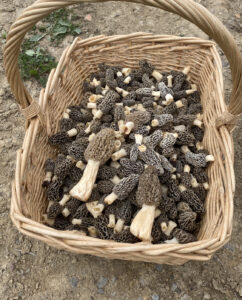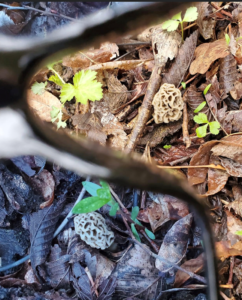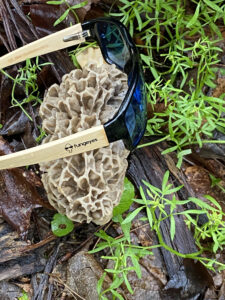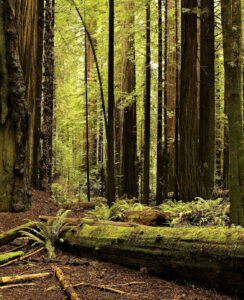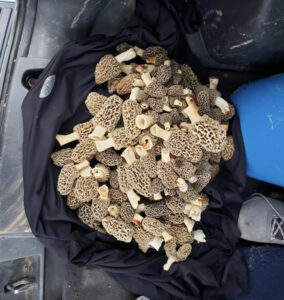The pressing question: where to look for morels?
The first thing I can tell you is that Morels can be found anywhere, in the most unsuspected places. Veteran morel hunters can all tell stories where they searched long hours in their best spots, only to stumble upon a mushroom somewhere it shouldn’t have been. That’s what makes the morel so mysterious, yet so wonderful. With that said, there are certain areas to begin your search.
You want to find areas that are moist, but not soaking wet. Well-draining creek beds and lower elevations are great places to begin. The key is to understand that spores are only transferred in 3 ways: wind, water, or animals. Wind and water are the main methods of transport.
Starting in low-lying areas and near creek beds can increase your odds because water flows downhill. For the same reason, you should look for natural shelves on slopes since water may collect in such places.
Loamy soil is also important. Loam is a rich mixture of sand, silt, and clay. Loam rich in calcium or lime is excellent for morels. Identifying loamy soil is easy.
I like to use a walking stick with a point the size of my little finger. When you press down on the soil, it should take a little pressure and then break through the ground. Swampy, muddy soil is not conducive to morel growth, so if your stick presses into the soil like soup, it’s too wet.
If you must press with all your might, the ground is too hard. Once again, I must stress that I have found morels in rock-hard soil, and I have found them in the center of swamps, but these are rare occurrences.
Look down..
The most important thing is to focus on the ground! You want to find other mushrooms or moss. This will lead you to more morels than any tree expert could ever find. The trees are important, but not as important as the soil. Morels can be found in only a few soil conditions, but they can be found under and around many different types of trees.
Soil comes first, trees second. When it comes to the trees, look for dying trees. Rarely will you find Morels when a tree is completely dead to the point of losing its canopy and all its bark.
You need a complete tree with decaying bark still present. Finding an area with many downed trees is good. Slippery Elm trees seem to be the most consistent. For more information on trees, visit the Trees tab.
Another good place to look is recently disturbed ground. Turkeys, for example, love mushrooms, so if you see turkey scratchings on the ground, chances are there are some mushrooms in the area.
Other disturbances such as excavation, tree clearing, and burn areas are a great place to start, provided that the soil is appropriate for morels. Disturbances tend to disrupt the connection between the fungus and the roots of the host tree, causing greater fruiting.
I have also had a lot of success on vegetated islands. Since they are surrounded by flowing water, many morel spores can be deposited there. If an island has hardwoods and is only accessible by boat, you’ve found the perfect, secluded spot to hunt. Chances are, you’ll be the first to forage there! Finally, the people who say Morel hunting is all about luck are completely mistaken.
Understanding science, applying common sense, and putting yourself in the right areas will always make for a greater harvest. To fully maximize your haul, make sure you wear Fungeyes!


